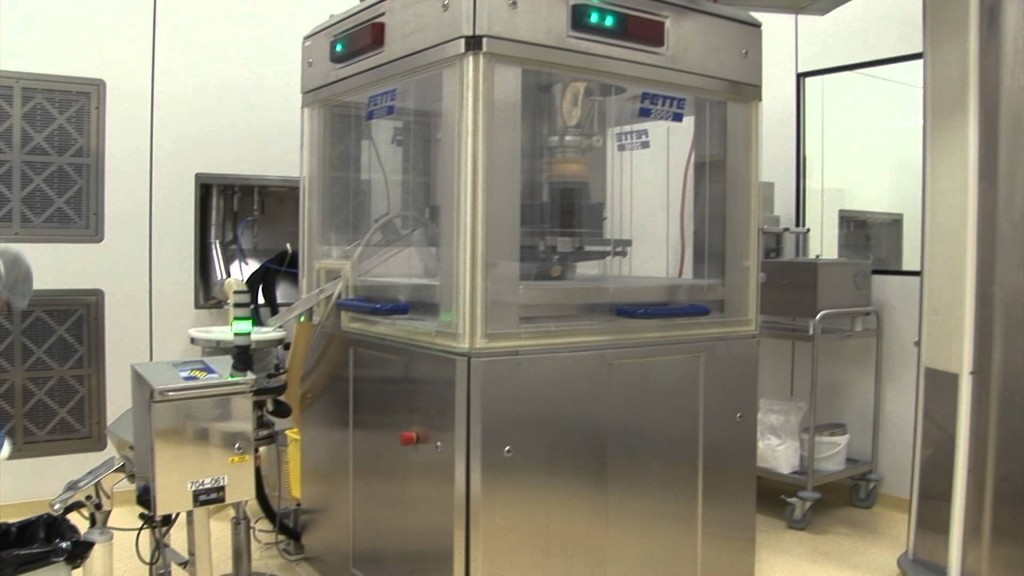High levels of product quality is not only vital to the success and reputation of a pharmaceutical company, it’s also mandated by government regulations and legislation. Like the production of other consumables, the production of pharmaceutical goods can be prone to the inclusion of metallic contaminants including those inherent in raw materials, those added during processing or mixing of ingredients, or in the capsule forming stage. For safety reasons, any inclusion, no matter the amount, must be identified and removed prior to delivery. In addition to end user safety, trace amounts of metallic contaminants can reduce the effectiveness of the medication, which can undoubtedly have a negative impact on the consumer’s health.

Metal detectors for the pharmaceutical industry play a key role in achieving this objective.
How Industrial Metal Detectors Work in the Pharmaceutical Industry
In a balanced coil system, a signal is emitted by a transmitter antenna. Two receiver antennas (located on either side of the transmitter antenna) are calibrated to identify magnetic or conductive material as the product passes through an aperture. A base reading of “0” indicates that no metallic contaminants are present – any deviation from this baseline is an indication that a contaminant is present.
Since most (but not all) metals are both conductive and magnetic, the signal emitted by the transmitter antenna is comprised of conductive (R) and magnetic (X) elements. As the magnetic and conductive characteristics of a material can change depending on its size, it’s generally recommended that an industrial metal detector be used in conjunction with an X-Ray fluorescence spectrometer in order to determine the material’s composition.
It should also be noted that some pharmaceutical products use various metallic substances as a catalyst, and it’s imperative that the detection equipment is capable of recognizing and essentially ignoring the signal generated by this “uncontaminated” product (by and large, these catalyst materials need to be removed prior to the end of production, at which point another detector may be required to ensure the final product is catalyst-free). To achieve this, the system can be taught to recognize the value of the X and R signals produced by the permissible material.
Improvements to Metal Detection Technology
Metal detectors have been a regular fixture in the pharmaceutical industry for a number of years. As with other technologies, there are always improvements that can be made that translate to a higher degree of accuracy and performance.
One such improvement has been the incorporation of a multi-coil system to improve the signal viewed by the receiver. When compared to a standard contemporary configuration (that employs one transmitter and two receivers), a multi-coil system can improve the detection ability of the equipment by nearly 20%.
Criteria for Choosing the Right Detector for Capsule and Tablet Processing
There are many criteria to consider prior to selecting a metal detector for pharmaceutical applications. The first is the sensitivity of the system’s instruments – specifically it’s range and its susceptibility to outside factors like vibrations and electromagnetic interference, both of which can cause erroneous readings.
It’s also important to consider how sensitive the system is to concentrations of approved metallic content (some capsules do contain elevated levels of iron, an element that metal detectors are designed to identify) and whether it can be calibrated to ignore these inclusions. A potential detection system should be tested to determine whether or not it can provide accurate detection for all possible production runs.
A second criteria to consider is quality assurance. How frequently does the detection system require auditing? Audit should consist of a simple pass or fail check the mitigates production down time. Additionally, the system that is implemented should have an early warning system that alerts the operator so that the detector can be inspected for foreign objects and/or adjustments to the threshold level can be made.
It’s also advisable that before a system is purchased to make sure the industrial metal detector manufacturer is amenable to a test run so that the performance of the equipment can be tested in a live production environment.
Key Questions to Ask When Evaluating a System
- Can the equipment be easily moved in and out of a production line?
- Is it easily adjustable for use with a tablet press or capsule filler?
- Does the detector affect the product it is scanning and if so, what is the effect?
- How easy is it to pass a contaminant sample through the system to ensure detection sensitivity?
- When a contaminant is found, is it removed automatically or does it cause a shutdown of the assembly?
- How easily can the system be disassembled, cleaned, and reassembled?
- How much operator involvement is required?
To conclude, metal detectors are an invaluable part of pharmaceutical industry. Selecting the right system requires a firm grasp of the unit’s performance capabilities in terms of sensitivity and quality control, as well as other considerations specific to the products made within a given facility.


